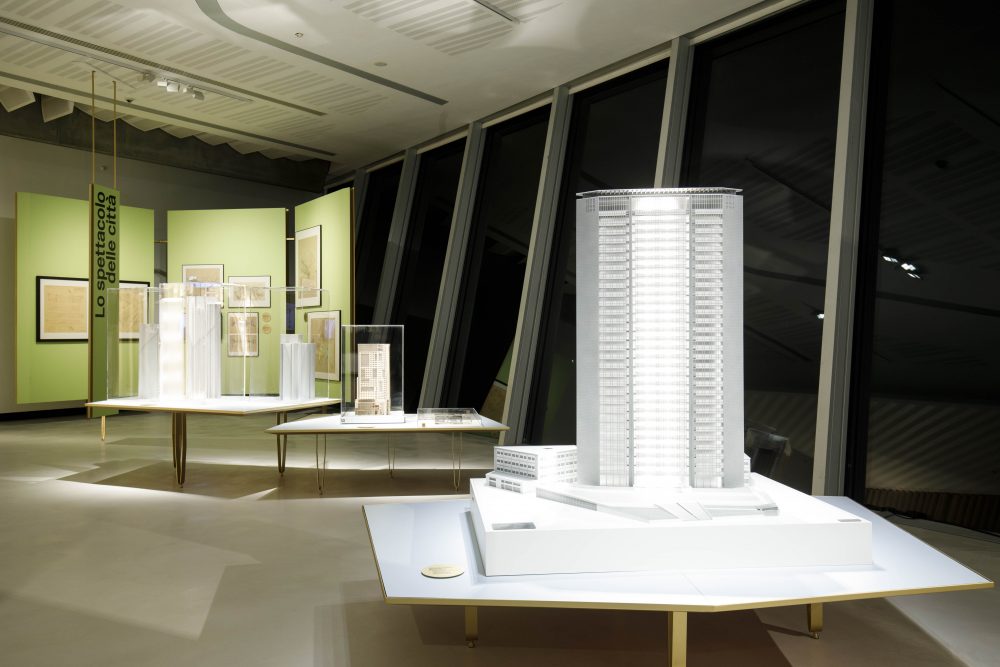GIO PONTI. Loving architecture, 27 November 2019 – 13 April 2020, MAXXI Museum, Rome
Architect, designer, art director, writer, poet, critic and all-round artist, Gio Ponti has been the object of historical-critical literature and exhibition programmes that would be difficult to equal. Share
Architect, designer, art director, writer, poet and critic, Gio Ponti was an allround artist who traversed much of the 20th century, profoundly influencing the taste of his time, responding to its most significant demands and anticipating many of the themes of contemporary architecture. 40 years on from his passing, MAXXI, the National Museum of XXI Century Arts, is devoting a major retrospective to this exceptional figure. The exhibition examines and presents his multi-faceted career, starting with an account of his architecture, a unique and original synthesis of tradition and modernity, history and progress, elite culture and quotidian existence.
The exhibition title, GIO PONTI. Amare l’architettura (Loving architecture) echoes that of his best-known book, Amate l’architettura (In praise of architecture). Curated by Maristella Casciato (Senior curator of Architectural Collections at the Getty Research Institute in Los Angeles) and Fulvio Irace (architecture critic and historian) with Margherita Guccione (Director, MAXXI Architettura), Salvatore Licitra (Gio Ponti Archives, Director) and Francesca Zanella (CSAC, President), the show will be hosted in MAXXI’s stunning Gallery 5 from 27 November 2019 to 13 April 2020.

Main partner Eni. For Giovanna Melandri, President of the Fondazione MAXXI, “Celebrating the greatness of Gio Ponti signifies immersing ourselves in a legacy that is peerless in terms of versatility, talent and application. Private buildings and public commissions, companies and places of study, objects of everyday use, office and naval furnishings, cathedrals and museums alternate within research that was never dogmatic or ideological, in which there was dialogue between classicism and modernity, the natural landscape and the urban horizon, the social vocation of space and the safeguarding of beauty.”

On display are archive materials, original models, photographs, books, magazines and design classics closely associated with his architectural projects and organized into eight sections evoking key concepts expressed by Ponti himself. The exhibition layout is immersive and spectacular, suggesting the master’s own idea of space: fluid, dynamic and colorful. In the museum lobby, visitors are welcomed by a powerful installation of monumental Alcantara banners, hanging the full height of Zaha Hadid’s spaces which reproduce the stylized facades of skyscrapers, evoking the skyline of an imaginary Pontian city.

Leaving the lifts that lead to the third floor, the reproduction of the giallo fantastic linoleum floor used for the ramp immediately transports visitors into the most famous of Pontian skyscrapers, the Pirelli tower in Milan. Before entering the Gallery, the photographic project by Thomas Demand recounts the exceptional vertical buildings conserved at the CSAC Archive and also on display in the exhibition.
Within the Gallery, the section Towards the exact house traces the theme of the house that was central to Ponti’s research into defining a space conrguent with modern life: here we find the first typical Milanese Domus, the designs for the La Casa Adatta exhibited at Eurodomus in 1970 and, above all, the synthesis of much of the architect’s thinking over the years: his apartment in Via Dezza, Milan. The exhibition continues with a focus on Ponti’s Classicisms from the 1930s, when major commissions led to imposing projects on the urban scale, such as the Scuola di Matematica in Rome, 1934, and the two Montecatini buildings in Milan, from 1936 and 1951.



